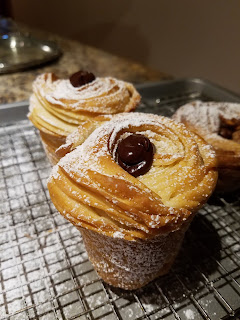Mashiko Plates
As always, I learned something during preparation for the Glazing Techniques class. I was trying to get the Fake Mashiko Glaze thick enough so that it wouldn't fade into the background and in doing so I determined that an Sp. Gr (Seicific gravity) of 170 was about right.
But that was so thick that after pouring it on the plate, it cracked when it dried. Although this was a nice surface design, I wanted to stop it, so I added some deflocculant (sodium silicate) to the glaze (it thinned a bit ) and that changed the pouring properties a lot and stopped the cracking. It only took a couple of drops in a cup of glaze.
Enjoy. Thanks to Chet McLaughlin for our little chat!
FAKE MASHIKO Cone 10 Reduction
37.60 F-4 Feldspar
8.90 Silica
8.20 Redart Clay
35.00 Calcined Redart Clay
5.70 Wollastonite
4.30 Talc
0.40 Bone Ash
3.60 Red Iron Oxide
Fake Mashiko is poured over a plate glazed with two coats of Hamada Rust.
Hamada Rust cone 10
77.0 Custer Feldspar
0.1 Silica
6.2 Whiting
4.3 Kaolin
12.4 Gerstley Borate
7.5 Red Iron Oxide



great glazes and tips, thanks.
ReplyDelete